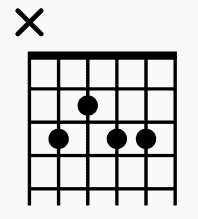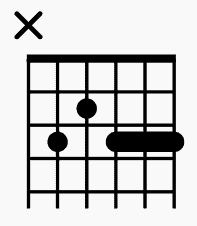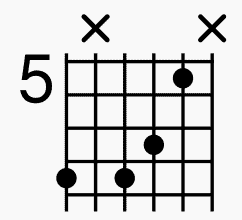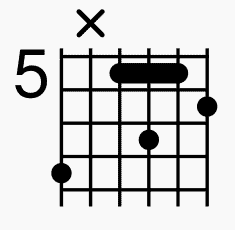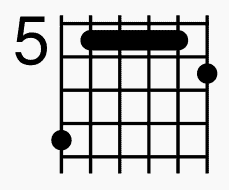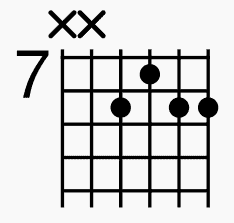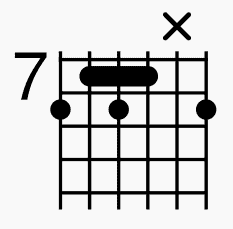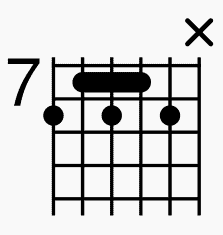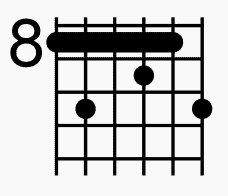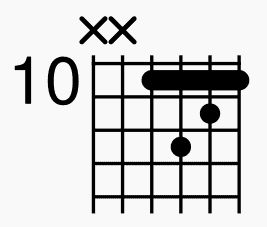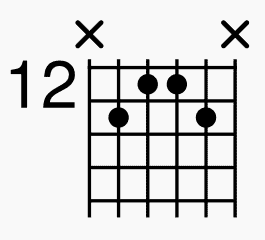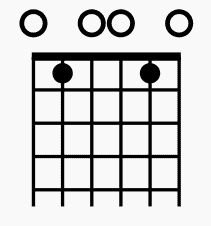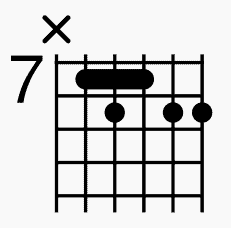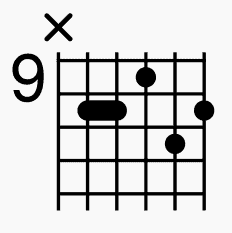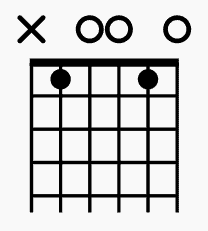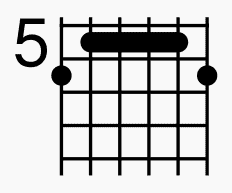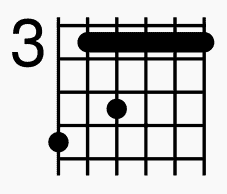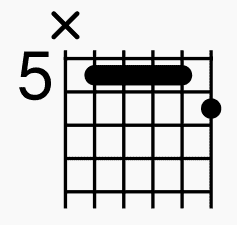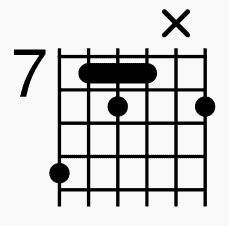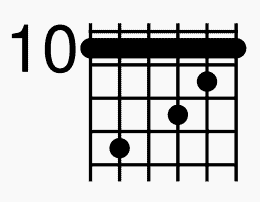When exploring musical possibilities, adding in what my teacher likes to call “expensive chords” really takes ordinary chord progressions and turns them into something special. The C9 chord is one such chord. It has a very bluesy jazzy funky sound to it. While it sounds great in either of these genres, you can insert it in any genre where you feel it works well. The only limit is your creativity, and of course, skill. But practice takes care of the aforementioned requirement.
I’m going to give you various ways to play this chord so that you’re easily able to incorporate it into your music however you want to. And because a little theory never hurt anyone, I’ll throw some of that in too. By the end of this article, you’ll have a better understanding of the C9 guitar chord, how to use it, how to construct it, and be able to play it in a variety of ways.
Contents
What is the C9 Chord?
The C9 chord is essentially constructed from a C7 chord, which is a dominant seventh, with the ninth or second interval added on. To understand this, let’s look at the C major scale over two octaves (an octave is eight notes).
C, D, E, F, G, A, B, C, D, E, F, G, A, B, C
1 2 3 4 5 6 7 8 9 10 11 12 13 14 15
As you may already know, the C major chord is constructed using intervals 1-3-5 (C, E, G)
The C7 chord is constructed from 1-3-5-b7 (C, E, G, Bb)
C9 is constructed from 1-3-5-b7-9 (C, E, G, Bb, D). As you can see, D is also the 2nd interval. That’s why you’ll see some people referring to the 9th interval as the 2nd. But really, when playing the C9 chord, it’s often better to use the 9th as it sounds better than the 2nd interval which makes the chord very discordant.
Of course, often, on a guitar, depending on how you play the chord, you don’t play all the notes, so it may sound just fine. Even on an instrument like a piano where it’s easy to play five-note chords, it can sound good depending on how it’s used.
If it seems confusing that seemingly a Bb appeared out of nowhere, understand that it’s common practice to borrow notes and chords from outside the key. And as you can see, it opens up a whole world of musical possibilities.
The C9 chord is also referred to as Cdom9 or C dominant ninth.
C9 vs Cadd9
It can be confusing at first to see C9 and Cadd9. Aren’t they the same thing? In both, the 9th interval is added after all. But nope, they aren’t the same chord.
Cadd9 is C, E, G, D
Note that, unlike C9, Cadd9 doesn’t have the 9th tacked onto the C7 chord. With the Bb missing, you can clearly hear the difference between the two chords.
How to Play C9 on the Guitar
Here are a few different ways to play the C9 guitar chord. The diagrams represent various voicings and inversions. You can start with those that are easiest for you to play and work your way up to the more complicated versions. But try to learn a few different ways to play the chord. This really helps when you want to unleash your creativity.
C9 Version 1
This is a simplified version. It’s missing the G that would usually be at the end. It’s typically played by skipping the 6th string, but since the open 6th string is an E, you can play it if you want to.
- Index finger: 4th string, 2nd fret (E)
- Middle finger: 5th string, 3rd fret (C)
- Ring finger: 3rd string, 3rd fret (Bb)
- Pinky finger: 2nd string, 3rd fret (D)
C9 Version 2
This is the full version of the above that includes a G. If you struggle to barre the bottom three strings, angle your hand a bit.
- Index finger: 4th string, 2nd fret (E)
- Middle finger: 5th string, 3rd fret (C)
- Ring finger: Barre strings 1-3rd, 3rd fret (Bb, D, G)
C9 Version 3
This one requires some stretching and clever muting. To mute the 5th and 1st strings, angle your fingers. Should you play the 1st string as an open string, it won’t be a train smash as it’s an E. But it won’t quite fit in with the rest of the chord.
- Index finger: 2nd string, 5th fret (E)
- Middle finger: 3rd string, 7th fret (D)
- Ring finger: 6th string, 8th fret (C)
- Pinky finger: 4th string, 8th fret (Bb)
C9 Version 4
This version only requires you to mute the 5th string. Despite that, it will require some regular practice to master.
- Index finger: Barre strings 2-4, 5th fret (string 2- E, string 4- G)
- Middle finger: 1st string, 6th fret (Bb)
- Ring finger: 3rd string, 7th fret (D)
- Pinky finger: 6th string, 8th fret (C)
C9 Version 5
Another barre chord, this one includes all the strings in the chord. It’s especially nice for strumming but also opens up the potential for complex picking patterns.
- Index finger: Barre strings 2-5, 5th fret (E, C, D, G)
- Middle finger: 1st string, 6th fret (Bb)
- Ring or pinky finger: 6th string, 8th fret (C)
C9 Version 6
One of the easier shapes to play, this is a higher voicing and sounds pretty good over the lower voicings of this chord if you’re playing with other people. Either learn to skip the 5th and 6th strings if you’re strumming, or mute by using your thumb and/or angling your hand for your middle finger to mute the 5th string.
- Index finger: 3rd string, 7th fret (D)
- Middle finger: 4th string, 8th fret (Bb)
- Ring finger: 2nd string, 8th fret (G)
- Pinky finger: 1st string, 8th fret (C)
C9 Version 7
This is much like the above chord, but a little more rounded with a slightly bassier sound with the 6th string thrown in the mix.
- Index finger: 3rd string, 7th fret (D)
- Middle finger: 6th string, 8th fret (C)
- Ring finger: 4th string, 8th fret (Bb)
- Pinky finger: 1st string, 8th fret (C)
C9 Version 8
This version you can play either using all your fingers or you can barre using two. If you accidentally play the 1st string if you’re barring the chord, this isn’t a problem since it will be a C.
- Index finger: 5th string, 7th fret (E)
- Middle finger: 3rd string, 7th fret (D)
- Ring finger: 4th string, 8th fret (Bb)
- Pinky finger: 2nd string, 8th fret (G)
Or
- Index finger: Barre strings 3-5, 7th fret (if it’s easier, barre the whole fret, but avoid the E string which will be a B)
- Middle or ring finger: Barre strings 2-4, 8th fret (Barre from strings 1-4 if easier, it’s okay to play the high E string as this will be a C and fit into this voicing)
C9 Version 9
This is a very similar version to the above ones, a combo really. It will have a fuller sound.
- Index finger: Barre strings 3-5, 7th fret (string 3- D, string 5- E)
- Middle finger: 6th string, 8th fret (C)
- Ring finger: 4th string, 8th fret (Bb)
- Pinky finger: 1st string, 8th fret (C)
C9 Version 10
As you can see, you can play this chord so many different ways in these frets.
- Index finger: Barre strings 3-5, 7th fret (string 3- D, string 5- E)
- Middle finger: 6th string, 8th fret (C)
- Ring finger: 4th string, 8th fret (Bb)
- Pinky finger: 2nd string, 8th fret (G)
C9 Version 11
This version is full sounding but a higher voicing, especially because of the notes in the 10th fret. It will take some practice to play this chord, but it’s well worth it.
- Index finger: Barre strings 2-6, 8th fret (string 2- G, string 4-Bb, String 6- C)
- Middle finger: 3rd string, 9th fret (E)
- Ring finger: 5th string, 10th fret (G)
- Pinky finger: 1st string, 10th fret (D)
C9 Version 12
This is a good version for delicate sounding picking, but also plays well over lower voicings.
- Index finger: 3rd string, 9th fret (E)
- Middle finger: 4th string, 10th fret (C)
- Ring finger: 1st string, 10th fret (D)
- Pinky finger: 2nd string, 11th fret (Bb)
C9 Version 13
It starts getting easier up here in terms of the frets being smaller (for smaller hands anyway), so less stretching. For some, however, this far down, it can start becoming rough on the wrists. Angling your guitar can help.
- Index finger: Barre strings 1-4 in the 10th fret (1st string- D, 4th string- C)
- Middle finger: 2nd string, 11th fret (Bb)
- Ring finger: 3rd string, 12th fret (G)
C9 Version 14
This voicing can still be played on most guitars, however, those with cutaway guitars will find it easier. The first way to play this chord is the easier way although it can take some practice to get your muscle memory dialed in.
- Index finger: Barre strings 3 and 4 in the 12th fret (string 3- G, string 4- D)
- Middle finger: 5th string, 13th fret (Bb)
- Ring finger: 2nd string, 13th fret (C)
Or
- Index finger: 4th string, 12th fret (D)
- Middle finger: 3rd string, 12th fret (G)
- Ring finger: 5th string, 13th fret (Bb)
- Pinky finger: 2nd string, 13th fret (C)
C9 Version 15
This voicing starts to become impractical for those without a cutaway guitar shape to play, but it can still be done. It can take some practice to get it right, particularly with a non-cutaway guitar, but be consistent. If the issue is your hands, you can try to get creative with the angle of your hands. Otherwise, there are plenty of other great sounding voicings of this chord.
- Index finger: 4th string, 14th fret (E)
- Middle finger: 5th string, 15th fret (C)
- Ring finger: Barre strings 1-3 in the 15th fret (G, D, Bb)
C9 Inversions
Inversions are simply the notes of the chord arranged in a different order. This produces a different sound as you’ll have to play the chord using notes from other frets than you usually would. This brings in new tones albeit the same chord. These inversions are written with the bass note after a slash since it’s no longer the C that’s the bass note. As you’ll see, rather than borrowing notes from other chords or keys, all the notes still belong to the C9 chord.
When the chord isn’t inverted, (C, E, G, Bb, D), it’s called root position.
If all the notes are played in the exact order they should be for the inversions, the proper terms are as follows:
- 1st inversion: E, G, Bb, C, D
- 2nd inversion: G, Bb, C, D, E
- 3rd inversion: Bb, C, D, E, G
- 4th inversion: D, E, G, Bb, C
With some of these chord versions, you’ll see that they are inversions, but not always quite in the right order. They will still be called C9/bass note simply because they contain the notes of the C9 chord with that particular bass note as opposed to the C. You don’t need to get technical unless you’re playing in a formal setting that requires it.
C9/E Version 1
With this inversion, you play it in the open position. All the strings that are open are notes within C9, the rest you fret. If you’re looking for a very simple way to play this chord, here you go.
- Index finger: 5th string, 1st fret (Bb)
- Middle or ring finger: 2nd string, 1st fret (C)
The open strings are 1-E, 3-G, 4-D, 6-E
C9/E Version 2
If you don’t mute the 6th string and hit it by accident, that’s okay, since it’s an E. The voicing of this chord is just much higher a voicing that would include the open low E.
- Index finger: Barre the 7th fret, strings 3-5, but if it’s easier barre strings 1-5 (string 3- D, string 5- E)
- Middle finger: 4th string, 8th fret (Bb)
- Ring finger: 2nd string, 8th fret (G)
- Pinky finger: 1st string, 8th fret (C)
C9/G
This is a tricky one to play, so be consistent with your practice.
- Index finger: 3rd string, 9th fret (E)
- Middle finger: Barre strings 4-5 in the 10th fret (string 4- C, string 5- G)
- Ring finger: 1st string, 10th fret (D)
- Pinky finger: 2nd string, 11th fret (Bb)
C9/Bb Version 1
This one is like version 1 of C9/E, but the E string is muted or skipped so that Bb now becomes the bass.
- Index finger: 5th string, 1st fret (Bb)
- Middle or ring finger: 2nd string, 1st fret (C)
C/Bb Version 2
This version is definitely a tricky one. If you don’t usually incorporate your thumb, now is the time. If you can’t manage the Bb on the 1st string, don’t worry about it, but you will need to skip the 1st string altogether then. Chances are you’ll end up barring strings 1-5 in the 5th fret, that will result in an A, a note not in the C9 chord.
- Thumb: 6th string, 6th fret (Bb)
- Index finger: Barre strings 2-5 in the 5th fret (E, C, G, D)
- Middle, ring, or pinky finger: 1st string, 6th fret (Bb)
C/Bb Version 3
If you like the Bb bass in the 6th fret but want a slightly lower voicing, this chord is a good option.
- Index finger: Barre strings 1-5 in the 3rd fret (string 1- G, string 2- D, string 3- Bb, string 5- C)
- Middle or ring finger: 4th string, 5th fret (G)
- Ring or pinky finger: 6th string, 6th fret (Bb)
C9/D Version 1
A beautifully simple chord, although if you’re new to barre chords you may need to build up the strength in your hands to make this one ring clearly.
- Index finger: Barre strings 2-5 in the 5th fret (string 2-E, string 3- C, string 4- G, string 5- D)
- Middle or ring finger: 1st string, 6th fret (Bb)
C9/D Version 2
Not a chord for the faint of heart, this can take some creativity to get down and a lot of practice.
- Thumb: 6th string, 10th fret (D)
- Index finger: Barre strings 3-5 in the 7th fret (string 3-D, string 5- E)
- Middle or ring finger: 4th string, 8th fret (Bb)
- Ring or pinky finger: 1st string, 8th fret (C)
C9/D Version 3
A high voicing that adds some sparkle but still sounds fairly full.
- Index finger: Barre strings 1-6 in the 10th fret (string 1-D, string 4- C, string 6- D)
- Middle finger: 2nd string, 11th fret (Bb)
- Ring finger: 3rd string, 12th fret (G)
- Pinky finger: 5th string, 13th fret (Bb)
How to Use C9
You can use C9 any time you would use a C7. This means you can use it in turnarounds, to create tension, and to add harmony. In chord progressions, you’d use it in place of the V chord most often, as you can hear in a 12 bar blues progression, a.k.a. 1-4-5.
Conclusion
The C9 chord gives you options that you didn’t have before. This jazzy chord sounds great in jazz, blues, and funk. But depending on your creative tastes, you can even work it into pop and rock. Any genre that you want to experiment with really.
In terms of playing the chord, it gives you nice options in your guitar playing journey, from the beginner phase into the advanced phase. Experiment with the different voicings and even the inversions. See which you like best. But use the others for practice to keep your skills sharp. You never know when you might want to or be called on to use one of the other voicings.
Happy jamming!


